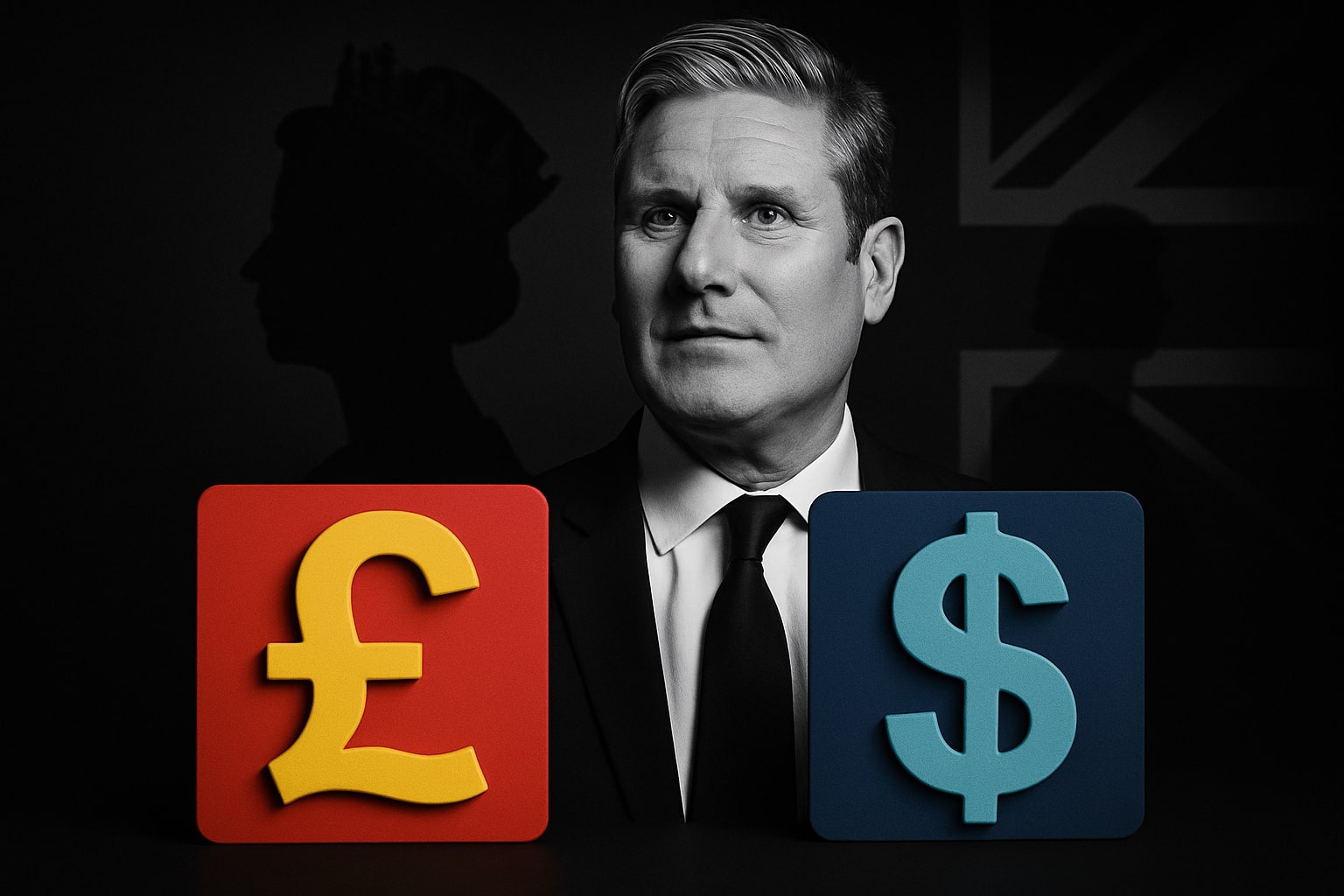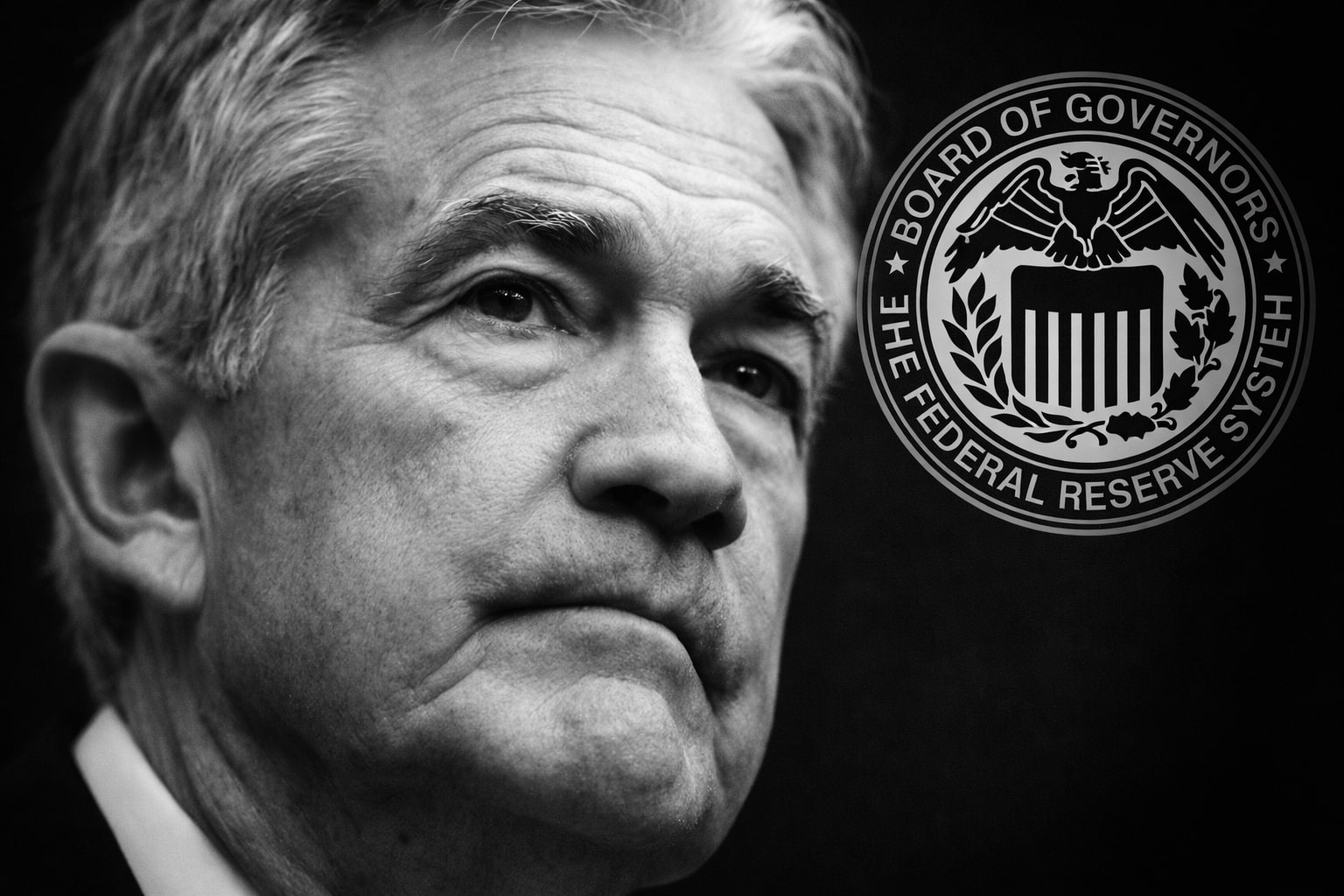
GBP/USD Price Forecast – Falls to 1.34 as Dollar Rises on Trump’s China Shift and UK Growth Weakens
The Pound slipped to 1.34 as Trump’s softer China rhetoric boosted the U.S. Dollar. Diverging monetary paths between the Federal Reserve and the Bank of England and fragile UK data now drive pairs | That's TradingNEWS
Trump’s Shift on China Sparks Dollar Rebound and GBP/USD Slide
Following President Donald Trump’s remarks that high tariffs on China were “unsustainable,” the U.S. Dollar strengthened broadly while risk sentiment improved. The GBP/USD pair dropped 0.17%, trading around 1.34, as the Dollar Index (DXY) rose to 98.42, recovering from earlier losses. Trump’s more conciliatory tone eased trade tensions, reigniting investor confidence in the Dollar and prompting short-term flows away from the Pound.
UK Growth Falters as BoE Eyes Rate Cuts Amid Rising Slack
The UK economy expanded by just 0.1% in August 2025, barely offsetting July’s contraction. The slowdown in wage growth and a mild rise in unemployment have heightened expectations that the Bank of England (BoE) could cut rates by 25 basis points before year-end. Market data from the CME Group shows a 44% probability of a December rate cut, up from 28% a week earlier. This dovish outlook comes as BoE MPC member Megan Greene warned that while the cutting cycle isn’t over, the bank “should not cut rates every quarter,” signaling caution even as growth momentum fades.
Fed Holds Firm as Inflation Stays Stubborn at 3.1%
Across the Atlantic, the U.S. Federal Reserve continues to emphasize patience, with the September CPI cooling slightly to 3.1% year-over-year but still above the 2% target. Fed officials, including Christopher Waller and Neel Kashkari, have reiterated that inflation remains “too high,” even as labor data softens. The market now sees only a 25% chance of a Fed rate cut before March 2026, reinforcing a strong Dollar bias against the Pound. The widening interest rate gap between the Fed’s steady stance and the BoE’s dovish tilt remains the primary downward pressure on GBP/USD.
Policy Divergence Widens Between BoE and Fed
Investors are increasingly pricing in 53 basis points of BoE rate cuts by the end of 2026, while the Fed remains anchored in its “higher-for-longer” narrative. This divergence creates a structural headwind for Sterling. In historical context, a similar setup occurred during the 2018–2019 trade war, when the Pound fell nearly 8% as global investors favored the Dollar’s stability over risk-sensitive currencies. Today’s environment mirrors that dynamic, with energy costs easing but fiscal risks in the UK growing.
UK Fiscal Concerns Deepen as Reeves Prepares Tax Hikes
Chancellor Rachel Reeves confirmed that the Autumn Budget will include new tax measures to stabilize public finances, adding to economic headwinds. While short-term spending will support social programs, the fiscal tightening is expected to shave 0.2% off GDP in early 2026. The Pound remains vulnerable as investors weigh deteriorating fiscal flexibility against the Fed’s firmer footing. Analysts note that the UK’s twin deficits — budget and current account — remain among the worst in the G7, limiting Sterling’s recovery potential even if inflation cools.
Market Reaction and Technical Outlook for GBP/USD
From a technical lens, GBP/USD is testing key support near 1.3350–1.3400, aligning with the 50-day simple moving average (SMA). A break below this level could trigger a move toward 1.32, where the next major support lies. Resistance sits near 1.3550, followed by the 1.3680 zone — a breakout above which could shift momentum short-term. Despite brief rebounds, the pair’s overall structure remains bearish, with lower highs signaling persistent downside bias.
Comparative Performance Across Majors
The British Pound gained modestly against the Australian Dollar this week but lost ground versus the Swiss Franc and U.S. Dollar, reflecting global risk aversion. Currency heatmaps show GBP/EUR stable near 0.87, supported by political calm in France after Prime Minister Sébastien Lecornu survived no-confidence votes, stabilizing the Euro (EUR). This relative balance keeps GBP/USD as the most direct reflection of central bank divergence and global macro sentiment.
Read More
-
IVE ETF Near $212: Is This S&P 500 Value Play Still Cheap for 2026?
20.12.2025 · TradingNEWS ArchiveStocks
-
XRP ETFs XRPI at $11.07 and XRPR at $15.76 Power $1.2B Inflows as XRP Fights for $2
20.12.2025 · TradingNEWS ArchiveCrypto
-
Natural Gas Price Forecast: NG=F Tests $3.60 Support as LNG Boom and $5 Henry Hub Calls Build Into 2026
20.12.2025 · TradingNEWS ArchiveCommodities
-
USD/JPY Price Forecast - Pairs Surges After BoJ’s 0.75% Hike as Pair Eyes 161.50 Resistance
20.12.2025 · TradingNEWS ArchiveForex
Trading Strategies: Navigating Volatility in GBP/USD
Derivative markets are positioning for higher volatility as both central banks prepare for late-year policy moves. Traders seeking downside exposure are favoring put spreads targeting 1.30–1.32, while others are employing straddles to capture broader volatility around November’s BoE meeting. Historically, volatility spikes in GBP/USD when policy paths diverge this sharply, echoing 2016 and 2020 patterns when rate expectations shifted abruptly.
Verdict: Bearish Bias Prevails as Policy Gap Widens
The macro backdrop favors continued Dollar strength into Q4 2025. With U.S. inflation sticky and the Fed cautious, while the UK faces stagnating growth and possible fiscal tightening, the GBP/USD outlook remains bearish. The pair’s short-term equilibrium rests around 1.34, but sustained pressure could pull it toward 1.32 in coming weeks. A BoE surprise cut in December would accelerate that slide, while only a sharp U.S. slowdown could reverse the trend.
Final Outlook: GBP/USD – Bearish (Sell Bias)



















